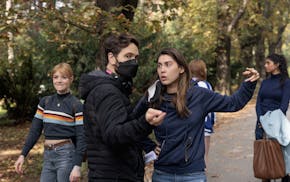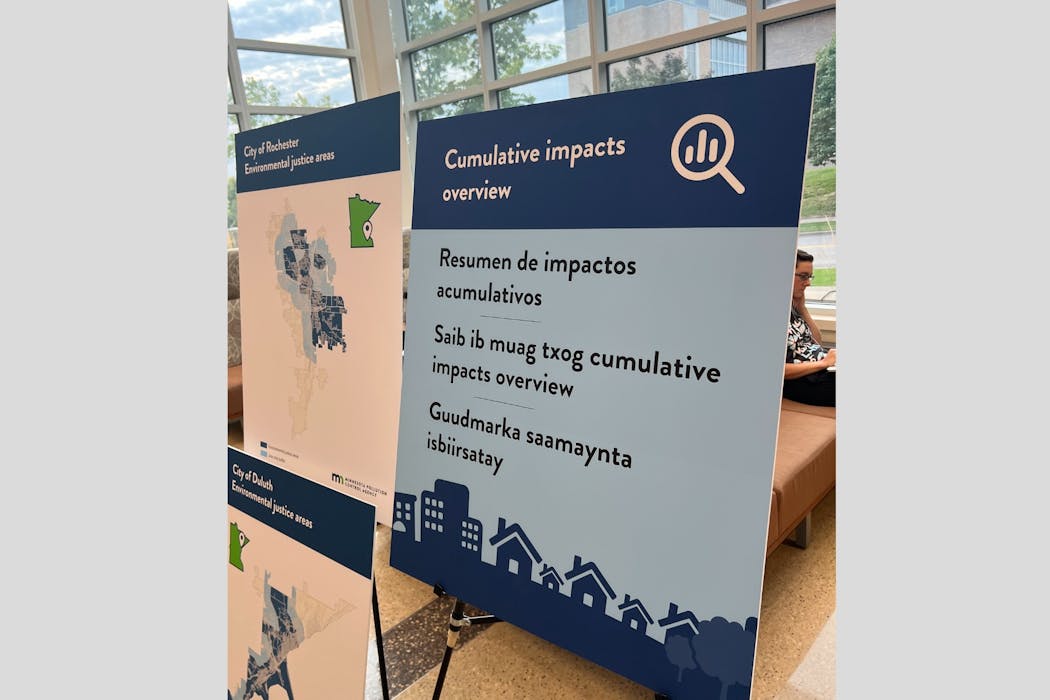When the Legislature passed a law in May boosting protections for historically polluted neighborhoods, it marked the end of a years-long effort by environmental justice advocates and lawmakers.
But it was only the beginning for the Frontline Communities Protection Act, broadly known as the cumulative impact law. Now the Minnesota Pollution Control Agency (MPCA) is seeking public feedback on how to define and enforce the law, which will go into effect in April 2026.
The new law sets higher regulatory standards for businesses and industries that want to operate in diverse, historically polluted neighborhoods. According to state data, racist zoning and housing policies built a system in which communities of color faced higher levels of air pollution.
"Today, as a result, too many children are disproportionately exposed to harmful pollution," said Anna Hotz, who leads administrative rulemaking at the MPCA.
Hotz said the state will need help from the public to formally define key terms in the law. Environmental advocates want to be an active part of the rulemaking process.
"I think it's important that the next three years are closely watched," said B. Rosas, who works with the Minneapolis-based nonprofit Climate Generation.
Although initially proposed to cover the whole state, the cumulative impact law applies for now only to Rochester, Duluth and the seven-county Twin Cities metro area. Large swaths of those areas are considered environmental areas or fall within the mile buffer range established in the law, according to the MPCA.
The law requires the MPCA to consider historical levels of pollution when issuing new permits or renewing existing ones in neighborhoods that have been labeled environmental justice areas, where at least one of these conditions is met:
- More than 40% of residents are people of color;
- Thirty-five percent of the population is at or below 200% of the federal poverty level, defined as a household income of about $60,000 for a family of four;
- Forty percent of the population has limited English language skills;
- The area is located on a federally recognized tribal nation.
There are 123 facilities with permits that now fall under the law, according to the MPCA. Of those facilities, 68 have permits that expire every five years and would be affected by the law automatically; the rest have non-expiring permits and would come under the law only if they sought to expand.
Historically, the MPCA has considered permit applications on an individual basis and allowed businesses to produce emissions within levels the state had determined were acceptable for facilities of their kind. Such businesses could include landfills, foundries or power plants, among others.
Now, projects proposed in or near environmental justice areas could trigger an analysis of how they contribute to overall pollution before the MPCA determines whether they should be allowed to operate.
But the law has several terms and components that need to be defined before it can take effect, Hotz said. That includes determining what pollution benchmarks would trigger a cumulative impact analysis, what constitutes a substantial adverse health and environmental impact, and what factors would be considered environmental stressors.
The law allows for a project that pollutes in an environmental justice area to proceed if it reaches a community benefit agreement with residents — but it doesn't define what constitutes an agreement and how much neighborhood support is required.
Steve Pak, an air permitting manager with the MPCA, said the law sends a message that the agency needs to be more intentional when approving permits. The MPCA is requesting comments from residents on definitions through Oct. 6.
Outside an MPCA public meeting earlier this month at Metropolitan State University in St. Paul, residents representing several climate groups pledged to stay involved through the rulemaking process. It's time to read the bill and get involved, said Sophia Benrud of the Minnesota Environmental Justice Table.
"All pollution is too much pollution for us to experience," she said.
Kawakatalt, with the American Indian Movement, said the MPCA should be consulting the Dakota nation about policies that affect tribal homelands. "At a minimum, you should have a Dakota representative here," he said.
Several people at the meeting pointed out that the cumulative impact law established for the Phillips neighborhood of south Minneapolis in 2008 hasn't led to major changes for facilities like Smith Foundry or Abbott Northwestern Hospital.
MPCA staffers said the new law will give them more tools to protect residents from pollution, and that they're concentrating on making it effective instead of focusing on the past.
The MPCA will be hosting another public meeting about the law from 6 to 8 p.m. Tuesday in Rochester. The meeting will be held at Graham Park, Aune Hall, 1407 3rd Av. SE.
About the partnership
This story comes to you from Sahan Journal, a nonprofit newsroom dedicated to covering Minnesota's immigrants and communities of color. Sign up for a free newsletter to receive Sahan's stories in your inbox.

Shakopee Mdewakanton tribe applies to put 815 acres in southwest metro into trust

Lakeville teachers vote to authorize strike

Perfection comes with a reward in the baseball Metro Top 10

Chaska native's directorial debut 'Tarot' will be in 3,500 theaters


